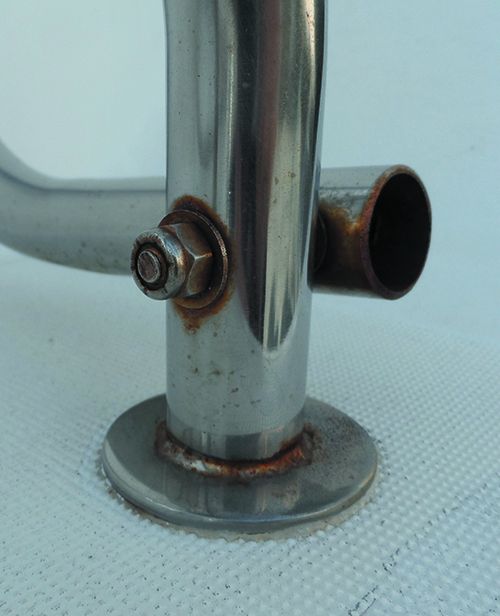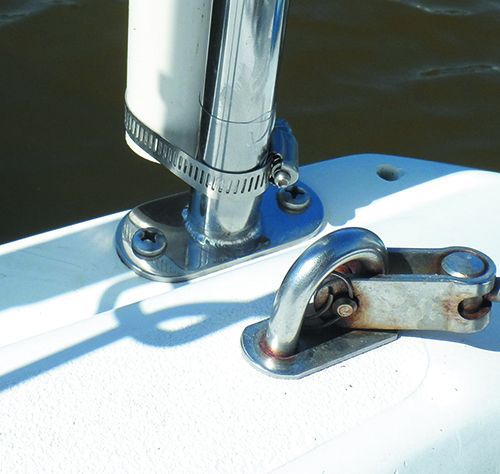


Grade 316 stainless steel contains nominally 16-18 percent chromium, 10-12 percent nickel and 2-3 percent molybdenum. Grade 304 contains nominally the same amounts of chromium and nickel, but lacks the molybdenum added to reduce pitting. Grade 18-8 is a broader grouping of alloys that contain nominally 18 percent chrome and 8 percent nickel, including 316, 304, 304L and 302 stainless, although most 18-8 steel is types 304 or 302.
Salt (sodium chloride) is the enemy of austenitic stainless steels (the type of stainless steel most commonly used in marine hardware). It is the chloride that does the damage. Salt water has about 18 times the maximum chloride levels recommended for 316 stainless. Chlorine is also harmful, but the low free chlorine levels of typical potable water systems will not affect your stainless steel tank. However, free chlorine concentrations of as little as 25 ppm can have a detrimental effect. Chloride-induced corrosion of stainless steel is complex depending on many things such as concentration, temperature, pH, etc.
Stainless rusts three times as fast in the tropics as in cold climates. Corrosion doubles for every 10F increase in temperature. The sailing season is also longer, and that means more salt exposure. Thus, an occasional sailor in the northeast may be happy with 304 fittings, while a cruiser in the tropics will not. Cold and freshwater are easy on stainless.
You may wonder, “If I’m diligent about polishing and passivating, can 304 and 18-8 replace 316 stainless?” This might work in cooler climates and in freshwater or brackish conditions, but not in salt water and definitely not for components that are sealed off and hard to inspect, such as chainplates.
Related articles: “The Great Titanium Trickle Down,” PS December 2011;
“Stainless Steel, Advantages and Ailments,” PS July 2014;
“Simple Tips for Maintaining Stainless Steel,” PS May 2014


































